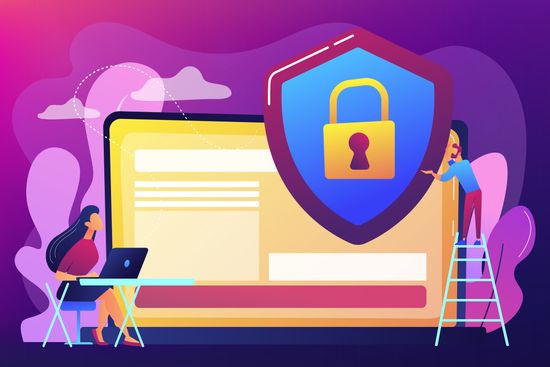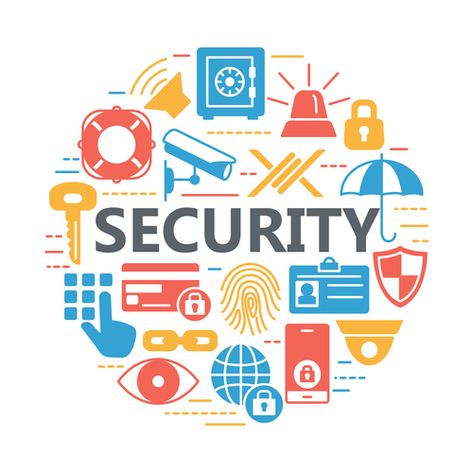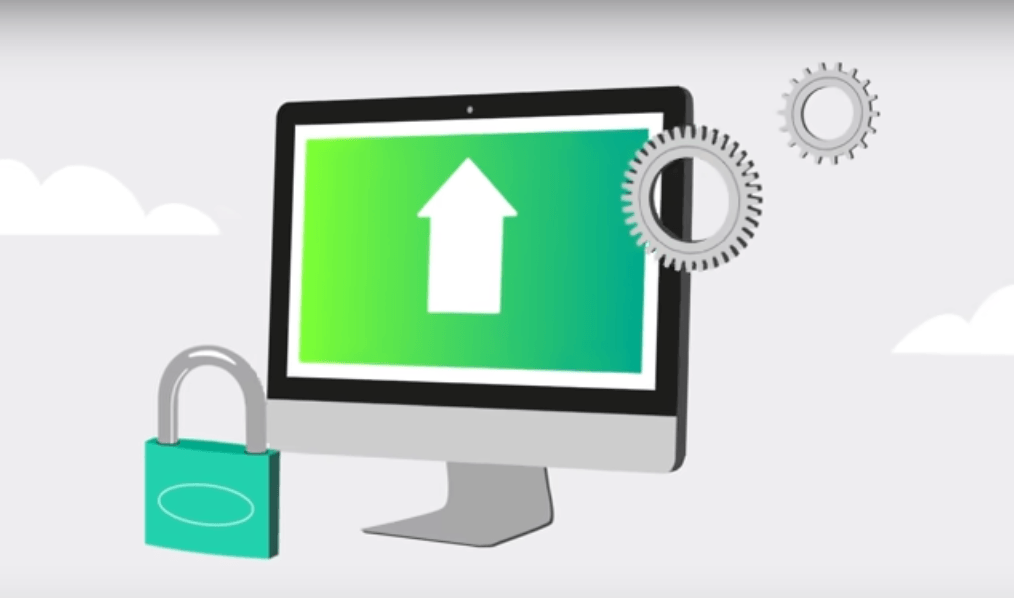Online security is crucial in today’s digital age. Protecting your data should be a top priority.
With cyber threats on the rise, understanding online security is more important than ever. Every click, every download, and every shared piece of information can put you at risk. Hackers and cybercriminals constantly seek ways to access your personal and financial information.
This blog post will guide you through the basics of online security, helping you keep your data safe. From simple tips to advanced strategies, we’ll cover everything you need to know. Stay informed, stay secure, and protect your online presence. Let’s dive into the essential practices of online security.
Importance Of Online Security
Online security is essential in today’s digital age. With the rise of the internet, more people share their personal information online. This increases the risk of cyber threats. Understanding the importance of online security helps protect sensitive data from hackers. It also ensures privacy and safety while browsing the web.
Protecting Personal Information
Keeping personal information safe is vital. Hackers can use your data for malicious purposes. Here are some tips to protect your information:
- Use strong passwords: Combine letters, numbers, and symbols.
- Avoid using the same password for multiple accounts.
- Enable two-factor authentication: Adds an extra layer of security.
- Be cautious of phishing scams: Do not click on suspicious links.
- Regularly update your software: Ensures you have the latest security features.
Additionally, secure your devices. Install antivirus software and keep it updated. Use a firewall to block unauthorized access. Encrypt sensitive data to make it unreadable to hackers.
Public Wi-Fi networks are often not secure. Avoid accessing sensitive information on them. If necessary, use a Virtual Private Network (VPN) for a secure connection.
Think before sharing personal information online. Be mindful of what you post on social media. Adjust your privacy settings to control who can see your information. This reduces the risk of your data being misused.
Preventing Identity Theft
Identity theft is a serious issue. Criminals steal your personal information to commit fraud. Here are some steps to prevent identity theft:
- Monitor your financial accounts: Check your bank statements regularly.
- Report suspicious activity immediately to your bank.
- Shred documents: Dispose of papers with personal information securely.
- Be cautious with your Social Security number: Only share it when absolutely necessary.
- Review your credit report: Look for any unusual activity or errors.
Online shopping can be risky. Use secure websites with HTTPS in the URL. Avoid saving payment information on websites. Use credit cards instead of debit cards for better fraud protection.
Stay informed about the latest scams. Knowledge helps you recognize and avoid them. Educate yourself on how to spot phishing emails and fake websites.
Identity theft can happen to anyone. Taking preventive measures reduces the risk. Protecting your personal information is the first step to stay safe online.
Common Threats
Online security is a big concern in today’s digital world. Many threats can harm your devices and steal your personal information. Understanding these threats is the first step to protecting yourself. This blog post will discuss two common threats: malware and viruses, and phishing attacks.
Malware And Viruses
Malware and viruses are harmful software designed to damage or disrupt your computer. They can steal your data or cause your device to malfunction. Common types of malware include:
- Viruses: These attach to files and spread when the files are shared.
- Worms: They spread through networks without needing to attach to files.
- Trojans: Disguise as legitimate software but cause damage once installed.
- Ransomware: Encrypts your files and demands payment to unlock them.
Protecting yourself from malware and viruses is crucial. Here are some tips:
- Use updated antivirus software.
- Avoid clicking on suspicious links or attachments.
- Regularly update your operating system and software.
- Backup your important data frequently.
By following these steps, you can reduce the risk of infection. Stay vigilant and cautious to keep your devices safe.
Phishing Attacks
Phishing attacks are attempts to steal your personal information. They often come in the form of fake emails or websites. These messages look like they come from trusted sources. Common signs of phishing attacks include:
- Urgent requests for personal information.
- Suspicious links or attachments.
- Poor spelling and grammar in the message.
Protecting yourself from phishing attacks involves being cautious. Here are some tips:
- Do not click on suspicious links or attachments.
- Verify the sender’s email address before responding.
- Use multi-factor authentication for added security.
- Report phishing attempts to your email provider or IT department.
Staying aware of these signs can help you avoid falling victim. Always be on the lookout for anything suspicious and report it immediately.
Safe Browsing Practices
Online security is crucial in the digital age. Safe browsing practices help protect personal data and privacy. Understanding how to use secure connections and avoid suspicious links can prevent many online threats. Let’s explore these practices for a safer online experience.
Using Secure Connections
Using secure connections is key to online safety. Always look for HTTPS in the website URL. This means the site is secure and your data is encrypted.
Here are some tips to ensure you are using secure connections:
- Check for a padlock icon in the browser’s address bar.
- Avoid entering personal information on HTTP websites.
- Use a Virtual Private Network (VPN) for added security.
Secure connections are essential when using public Wi-Fi. Public networks are often less secure. Therefore, avoid accessing sensitive information on these networks.
Using secure connections protects you from many cyber threats. It ensures that your data remains private and safe from hackers. Always prioritize secure connections when browsing online.
Avoiding Suspicious Links
Avoiding suspicious links is another crucial practice. Clicking on unknown links can lead to malware or phishing attacks. These attacks can steal personal information or harm your device.
To avoid suspicious links, follow these steps:
- Do not click on links from unknown sources.
- Hover over the link to see the full URL before clicking.
- Be cautious of links in emails and social media messages.
Phishing emails often look like they come from legitimate sources. Always verify the sender’s email address. Look for signs of phishing, such as poor grammar or urgent requests.
Using antivirus software can also help. It can detect and block harmful links. Stay updated with the latest security software to protect your device.
By avoiding suspicious links, you reduce the risk of cyber attacks. Stay vigilant and think before you click to ensure online safety.

Credit: www.ncsc.gov.uk
Password Management
Online security is crucial in today’s digital age. With more of our lives happening online, protecting personal information is essential. Password management is one of the key aspects of online security. Strong, unique passwords can protect your accounts from unauthorized access. This post will cover how to create strong passwords and the benefits of using password managers.
Creating Strong Passwords
Creating a strong password is the first step in securing your online accounts. Here are some tips for creating effective passwords:
- Use at least 12 characters.
- Include uppercase and lowercase letters.
- Incorporate numbers and symbols.
- Avoid using common words or phrases.
- Do not use personal information like birthdays or names.
Here’s a comparison of weak and strong passwords:
| Weak Password | Strong Password |
|---|---|
| password123 | G#8kLp!3bQ |
| johnsmith | 7Jd$2z&XwP |
Strong passwords are hard to guess and offer better protection. Changing passwords regularly also helps maintain security. Never reuse passwords across different sites.
Using Password Managers
Managing many strong passwords can be difficult. Password managers help store and organize passwords securely. They generate complex passwords and store them for you. This means you only need to remember one master password.
Benefits of using password managers:
- Store all passwords in one secure place.
- Generate strong, unique passwords for each account.
- Automatically fill in passwords on websites.
- Encrypt your password database for added security.
Popular password managers include:
| Password Manager | Features |
|---|---|
| LastPass | Free tier, multi-device sync, secure notes |
| 1Password | Family sharing, travel mode, dark web monitoring |
| Dashlane | VPN service, dark web monitoring, password health reports |
Using a password manager simplifies your online security. It ensures all your accounts have strong, unique passwords. This adds an extra layer of protection to your digital life.
Two-factor Authentication
Online security is crucial in today’s digital world. One of the best ways to protect your accounts is by using Two-Factor Authentication (2FA). This method adds an extra layer of security by requiring not only a password but also a second form of verification. This makes it much harder for unauthorized users to gain access.
Benefits Of 2fa
Two-Factor Authentication offers several important benefits:
- Enhanced Security: Even if someone has your password, they cannot access your account without the second factor.
- Protection Against Phishing: Phishing attacks are less effective because they would need the second factor.
- Peace of Mind: Knowing your accounts have an extra layer of protection can reduce stress.
- Compliance: Many regulations require 2FA for data protection, helping you stay compliant.
Here is a quick comparison of accounts with and without 2FA:
| Without 2FA | With 2FA |
|---|---|
| Only password required | Password + second factor |
| Higher risk of unauthorized access | Lower risk of unauthorized access |
| More vulnerable to phishing | Less vulnerable to phishing |
How To Enable 2fa
Enabling Two-Factor Authentication is simple and straightforward. Follow these steps:
- Log in: Access your account settings.
- Find 2FA option: Look for security settings or 2FA setup.
- Choose method: Select your preferred method (SMS, app, etc.).
- Verify: Follow the prompts to verify your second factor.
- Save settings: Ensure your settings are saved and active.
Many popular platforms support 2FA. Here are some examples:
| Platform | 2FA Method |
|---|---|
| App, SMS, Backup codes | |
| App, SMS | |
| Amazon | App, SMS |
| Microsoft | App, SMS, Email |
Always remember to keep your second factor secure. Do not share it with others. This small step can greatly increase your online safety.
Device Security
Online security is very important today. It helps protect our personal information and devices. One key part of online security is device security. This means keeping our devices safe from threats. Two main ways to do this are updating software regularly and using antivirus programs.
Updating Software Regularly
Keeping software up to date is crucial for device security. Software updates often include fixes for bugs and security holes. These updates make it harder for hackers to access your device. Ignoring updates can leave your device vulnerable. For example, older versions of software might have known weaknesses.
Here are some reasons why updating software is important:
- Fixes bugs that could cause problems.
- Improves performance and speed.
- Enhances security by fixing vulnerabilities.
- Adds new features for better usability.
Many devices allow you to set automatic updates. This ensures your software is always up to date. To turn on automatic updates:
- Go to your device settings.
- Select the software update option.
- Enable automatic updates.
Regular updates are a simple way to protect your device. They help keep your information safe and your device running smoothly.
Using Antivirus Programs
Antivirus programs are essential for device security. They help detect and remove threats like viruses, malware, and spyware. Without antivirus protection, your device is at risk of infection.
Here are some benefits of using antivirus programs:
- Detects and removes harmful software.
- Provides real-time protection against new threats.
- Scans files and websites for malicious content.
- Offers additional tools like firewalls and email protection.
Choosing the right antivirus program is important. Look for these features:
| Feature | Description |
|---|---|
| Real-time scanning | Checks files as you open them. |
| Automatic updates | Keeps your antivirus up to date. |
| Firewall | Blocks unauthorized access to your device. |
| Email protection | Scans emails for harmful attachments. |
Installing an antivirus program is easy. Download it from a trusted source. Follow the installation instructions. Once installed, run a full system scan. This will check your device for any existing threats. Regular scans and updates ensure ongoing protection.
Social Media Safety
Online security is very important. Social media safety is a big part of it. Many people use social media every day. Keeping personal information safe is necessary. There are ways to protect yourself online. Privacy settings and managing friend requests are key steps.
Privacy Settings
Setting your privacy controls on social media is critical. These settings help control who sees your information. Always review and adjust your privacy settings. Here are some tips:
- Profile Visibility: Choose who can see your profile. Options include everyone, friends, or custom lists.
- Post Privacy: Set who can see your posts. This can be public, friends, or specific groups.
- Location Sharing: Turn off location sharing. It helps keep your location private.
- Tagging Controls: Review tags before they appear on your profile. It helps control what others post about you.
Regularly check your settings. Social media platforms often update their features. Keeping your settings up-to-date ensures ongoing protection.
Managing Friend Requests
Accepting friend requests can be risky. Not everyone is who they claim to be. Here are some guidelines:
- Verify Identity: Check the profile of the person. Look for mutual friends or shared interests.
- Be Selective: Only accept requests from people you know. Strangers can pose a risk.
- Review Connections: Occasionally review your friend list. Remove people you no longer interact with.
- Report Suspicious Accounts: Report any suspicious or fake accounts to the platform.
Being careful with friend requests helps protect your online space. Trust your instincts and stay safe.
Credit: chromewebstore.google.com
Responding To Breaches
Online security is crucial in our digital world. With increasing cyber threats, understanding how to respond to breaches is essential. Knowing the steps to take can help minimize damage and protect sensitive information. This guide will help you recognize breaches and outline the steps to take after one occurs.
Recognizing A Breach
Recognizing a breach quickly can save a lot of trouble. Look out for unusual activity or unexpected changes. Here are some signs:
- Unusual Account Activity: Login attempts from unfamiliar locations.
- Unexpected Password Changes: Receiving password reset emails you didn’t request.
- Unexplained Transactions: Charges or transfers you didn’t authorize.
Other signs include sudden slowdowns in your system or changes in file names. Suspicious emails asking for personal information can also indicate a breach. Keeping an eye on these can help you act quickly.
Monitoring your accounts and systems regularly is key. Tools like antivirus software and firewalls can help detect unusual activity. Always stay alert and prepared.
Steps To Take After A Breach
Taking immediate action after a breach is vital. Follow these steps to mitigate the damage:
- Change Passwords: Update passwords for all affected accounts. Use strong, unique passwords.
- Contact Financial Institutions: Inform banks and credit card companies about the breach.
- Monitor Accounts: Keep a close eye on your accounts for any unusual activity.
It’s also important to secure your systems. Run a full antivirus scan to remove any malware. Updating your software can fix vulnerabilities. Report the breach to relevant authorities if needed.
Consider seeking professional help if the breach is severe. Cybersecurity experts can provide valuable assistance. They can help secure your systems and prevent future breaches.

Credit: www.youngwonks.com
Frequently Asked Questions
What Is Online Security?
Online security refers to measures taken to protect your online activities and data. It includes using strong passwords, antivirus software, and secure networks.
Why Is Online Security Important?
Online security protects your personal and financial information from hackers. It prevents identity theft, data breaches, and financial loss.
How Can I Improve My Online Security?
You can improve your online security by using strong, unique passwords, enabling two-factor authentication, and regularly updating software.
What Are Common Online Security Threats?
Common online security threats include phishing scams, malware, ransomware, and hacking. These can lead to data theft and financial loss.
Conclusion
Staying safe online is crucial in today’s digital age. Simple steps can help. Use strong passwords. Keep your software updated. Be cautious with links and emails. Protect your personal information. Regularly monitor your accounts for unusual activity. By practicing these habits, you can enhance your online security.
Stay vigilant and informed. Your online safety matters.

